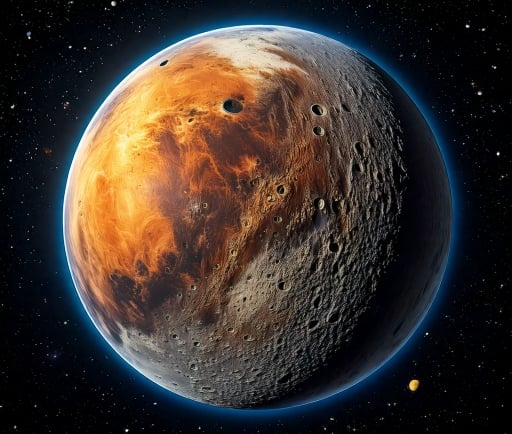The Exoplanet K2-18b: A New Frontier in the Search for Life


Introduction to K2-18b
K2-18b is an intriguing exoplanet located in the habitable zone of its star, approximately 124 light-years away from Earth. Since its discovery, it has captivated the attention of scientists and astrobiologists alike. This interest has intensified with the recent possible detection of dimethyl sulfide (DMS), a molecule that is a key byproduct of biological processes on Earth.
The Significance of Dimethyl Sulfide
Dimethyl sulfide is notable for being produced by phytoplankton, which form the basis of marine ecosystems. On Earth, the presence of DMS is often correlated with life, making its potential detection on K2-18b particularly compelling. The existence of such a molecule in the atmosphere of an exoplanet could serve as indirect evidence of biological activity, prompting further investigation into the conditions necessary for life beyond our planet.
Implications for Astrobiology
The implications of detecting DMS on K2-18b extend far beyond the confines of this single exoplanet. This finding could redefine our understanding of habitable zones and the potential for life in our universe. Traditionally, the search for extraterrestrial life has heavily relied on the direct detection of biosignatures or the existence of liquid water. The evidence of DMS introduces an additional layer to this exploration, suggesting that life may thrive in environments previously thought inhospitable.
Furthermore, the study of K2-18b offers valuable insights into planetary atmospheres and their evolution. With advancements in spectroscopy and observational techniques, researchers can analyze the light passing through K2-18b's atmosphere to search for not just DMS, but a plethora of other molecules that may indicate biological processes. This method could lead to stunning discoveries about the nature of life beyond Earth.
Future Explorations
The discussion surrounding K2-18b is still in its infancy, yet the potential for future missions focused on this exoplanet is significant. Telescopes and space missions designed to study exoplanets are continually being developed, with the aim of deepening our understanding of K2-18b and similar worlds. The upcoming James Webb Space Telescope is anticipated to contribute immensely to this field, potentially confirming the presence of DMS and other molecules in the atmospheres of exoplanets.
In conclusion, the possible detection of dimethyl sulfide on K2-18b marks a pivotal moment in the search for extraterrestrial life. The universe is vast, and the possibilities for discovery are endless. As technology advances and our understanding deepens, we stand on the brink of potentially redefining life as we know it and our place among the stars.
